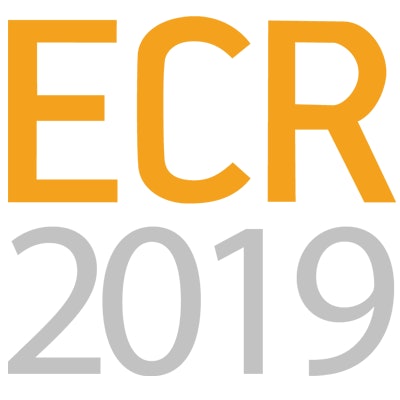
By monitoring CT dose and adjusting protocols at their institution, researchers from Italy were able to identify the optimal parameters for reducing cancer patients' exposure to radiation from whole-body CT exams, without lowering image quality. They presented their findings on Wednesday at ECR 2019 in Vienna.
Growing concern over the potential harms associated with CT radiation exposure and the wide variability in CT dose levels throughout Europe has spurred calls for better standardization of CT dose. Recently, clinicians have begun using automated dose tracking software and organizing teams of specialists to help advance dose standardization, first author and presenter Dr. Marta Montesano, from Sapienza University of Rome, told session attendees.
In step with these efforts, Montesano and colleagues put together a team consisting of two radiologists, a radiology resident, a radiographer, a department director, and a medical physicist to explore ways to improve whole-body CT protocols at their hospital. They began by using automated radiation dose monitoring software (DoseWatch, GE Healthcare) to monitor 500 consecutive adult cancer patients who underwent a whole-body CT exam between April and July 2017.
The researchers examined the radiation dose data provided by the software, rated the image quality of the whole-body CT scans, and evaluated various technical parameters such as patient positioning, all with the aim of optimizing CT protocol acquisition. After discussing the information, they decided on several adjustments to their hospital's approach to whole-body CT, from lowering radiation dose by 10 percentage points to providing additional training to CT technologists concerning patient positioning.
After applying these changes, the group monitored 1,000 adult cancer patients who underwent whole-body CT at the same institution from July 2017 to January 2018.
Montesano and colleagues found that the alterations they made to their hospital's whole-body CT protocol led to statistically significant reductions in radiation dose for head CT and chest CT exams, without notably affecting the image quality of the CT exams. The new protocol additionally led to statistically significant reductions in the number of times a CT scan exceeded diagnostic reference levels (DRLs) for all regions of the body.
| Whole-body CT radiation dose before vs. after dose monitoring | ||||
| Preintervention | Postintervention | |||
| CT scan region | Dose-length product (mGy-cm) | No. of alerts for exceeding DRLs | Dose-length product (mGy-cm) | No. of alerts for exceeding DRLs |
| Head (120 kV) | 1,032 | 24 | 667.4 | 0 |
| Chest (100 kV) | 154.2 | 25 | 138.5 | 12 |
| Neck (100 kV) | 180.1* | 27 | 154.9* | 2 |
| Abdomen (100 kV) | 416* | 25 | 411.2* | 16 |
A quantitative analysis of the results also revealed that optimizing the CT protocol reduced the number of errors in patient centering observed during whole-body CT exams by a statistically significant degree. Approximately 15% of CT scans acquired in the first time period fell outside of the designated scanning area, compared with none after dose monitoring was implemented.
"The dose monitoring system and the establishment of a dose team enabled the homogenization of [CT] acquisition protocols, the identification of radiation dose reference levels for CT for individual anatomical districts, and the reduction of radiation dose exposure without impairing image quality," Montesano said.



















